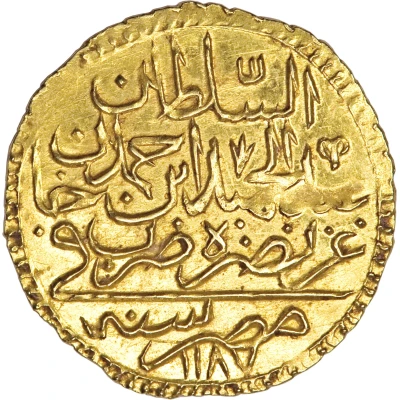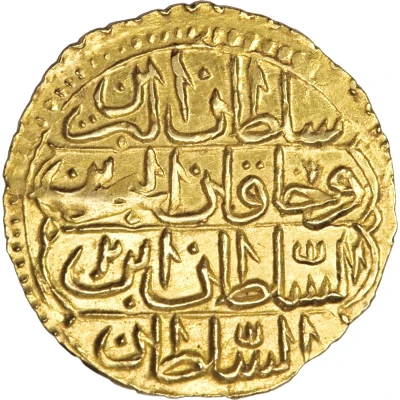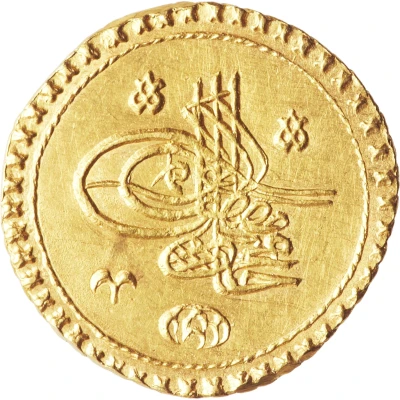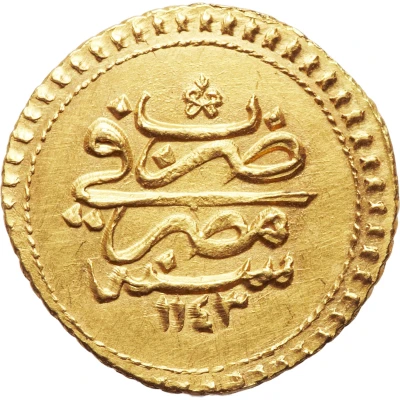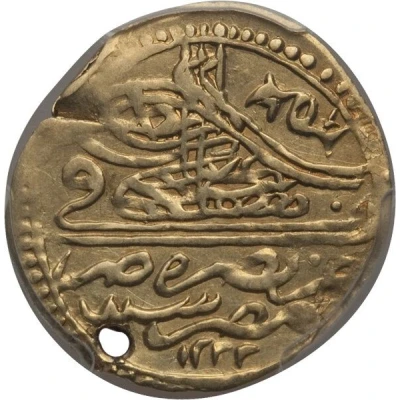
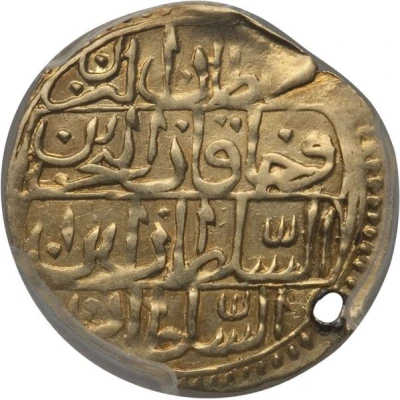

© Heritage Auctions
Zeri Mahbub - Mustafa IV
1222 (1807) year| Gold (.685) | 2.25 g | 25 mm |
| Issuer | Eyalet of Egypt (Egypt) |
|---|---|
| Sultan | Mustafa IV (1807-1808) |
| Type | Standard circulation coin |
| Year | 1222 (1807) |
| Calendar | Islamic (Hijri) |
| Value | 1 Zari Maḥbūb (7⁄2) |
| Currency | Piastre (1688-1834) |
| Composition | Gold (.685) |
| Weight | 2.25 g |
| Diameter | 25 mm |
| Shape | Round (irregular) |
| Orientation | Coin alignment ↑↓ |
| Demonetized | Yes |
| Updated | 2024-10-04 |
| Numista | N#407506 |
|---|---|
| Rarity index | 100% |
Reverse
Tughra inside circle with Sultan Mustafa IV
Script: Arabic
Lettering:
سلطان البرين
وخاقان البحرين
السلطان ابن
السلطان
Translation:
Sultan of the two shores (the two lands Europe and Asia)
and King of the two seas (the Mediterranean and the black seas)
the Sultan son of (1)
the Sultan
Interesting fact
One interesting fact about the Zeri Mahbub - Mustafa IV 1222 (1807) coin is that it was issued during a time of great economic and political change in Egypt. The country was under the rule of the Ottoman Empire, and the coinage during this period reflected the influence of both the Ottoman and the local Mamluk dynasties. The coin's design features a unique blend of Islamic and Arabic motifs, showcasing the cultural richness and diversity of Egypt during this time. Additionally, the use of gold in the coin's minting was a symbol of the country's wealth and prosperity.
